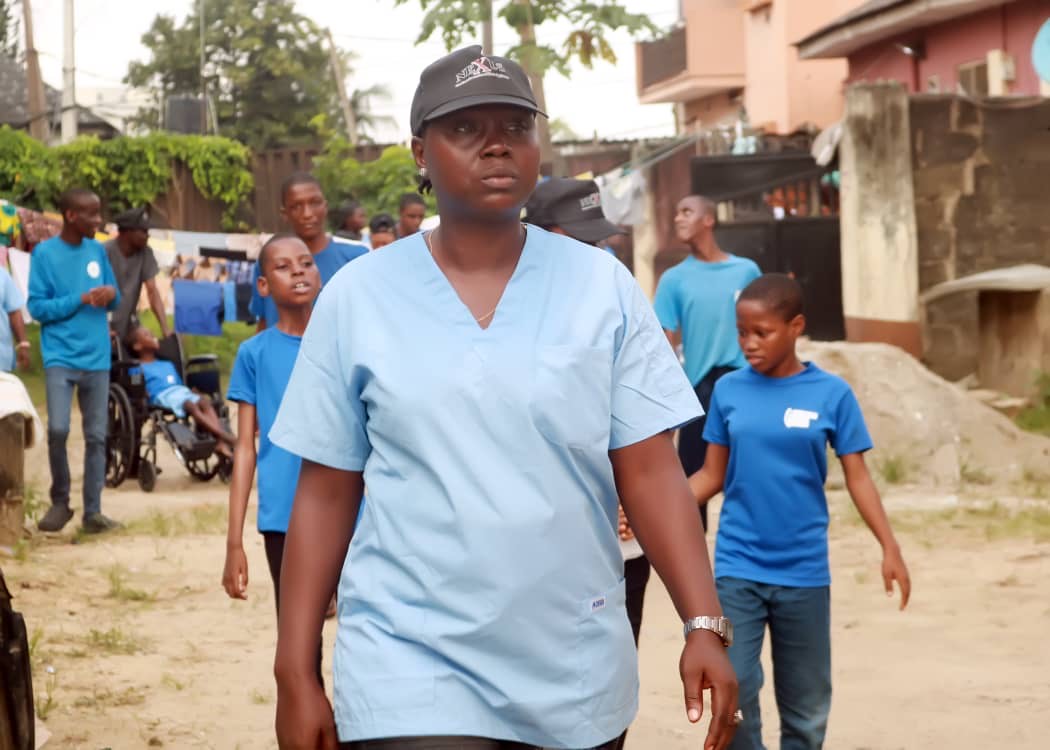WHAT IS DEVELOPMENTAL DISORDER
Developmental disorder is a condition originating from childhood that involves series of impairment in different areas. These disorders comprise Autism Spectrum Disorder(ASD), Cerebral Palsy(CP), Down Syndrome(DS), Motor Speech Disorder, Attention Deficit Hyperactive Disorder, et al.
AUTISM SPECTRUM DISORDER
Autism Spectrum Disorder (ASD) is a neurodevelopmental disorder that affects communication, social interaction, and behavior. It is called a "spectrum" disorder because it encompasses a wide range of symptoms and varying levels of impairment.
People with ASD may have difficulties with social interactions and communication skills. They may have challenges in understanding and using verbal and nonverbal language, such as gestures, facial expressions, and tone of voice. Some individuals with ASD may have delayed language development or struggle with initiating and maintaining conversations.
Another characteristic of ASD is restricted and repetitive patterns of behavior, interests, or activities. This can manifest as repetitive body movements (e.g., hand flapping, rocking), a strong preference for sameness, adherence to specific routines, intense interests in specific topics, or sensory sensitivities (e.g., sensitivity to light, sound, touch).
The symptoms of ASD typically appear in early childhood, often before the age of 2 or 3, and can vary greatly in severity. While some individuals with ASD may require substantial support in their daily lives, others may have higher levels of functioning and excel in certain areas.
It's important to note that ASD is a complex condition with a range of abilities and challenges, and each individual with ASD is unique. The causes of ASD are still not fully understood, but research suggests a combination of genetic and environmental factors contribute to its development.
Early diagnosis and intervention can play a crucial role in improving outcomes for individuals with ASD. Treatment approaches may include behavioral therapies, speech and language therapy, occupational therapy, and educational support tailored to the individual's needs.
CEREBRAL PALSY
Cerebral palsy (CP) is a group of permanent movement disorders that appear in early childhood and affect a person's ability to control their muscles. It is caused by damage to or abnormalities in the developing brain, specifically in areas that control movement, posture, and coordination.
The term "cerebral" refers to the brain, and "palsy" refers to a disorder of movement or posture. CP is not a progressive condition, meaning it does not worsen over time. However, the symptoms and level of impairment can vary widely from person to person.
The causes of cerebral palsy can differ. Some cases are due to brain damage that occurs before or during birth, while others can be attributed to brain injury during early childhood, such as infections, head trauma, or oxygen deprivation. However, in many cases, the exact cause of CP is unknown.
The symptoms of cerebral palsy can vary in type and severity. Common symptoms include:
- Impaired muscle coordination (ataxia) and control.
- Muscle stiffness or spasticity, which can cause abnormal movements or postures.
- Balance and coordination difficulties.
- Problems with fine motor skills, such as grasping objects or writing.
- Speech and communication difficulties.
- Sensory impairments, such as vision or hearing problems.
- Intellectual disabilities or learning difficulties (although many individuals with CP have normal intelligence).
DOWN SYNDROME
Down syndrome, also known as trisomy 21, is a genetic disorder caused by the presence of an extra copy of chromosome 21. It is named after John Langdon Down, the British physician who first described the condition in 1866.
Chromosomes are structures in our cells that carry genetic information. Typically, humans have 46 chromosomes arranged in 23 pairs. However, individuals with Down syndrome have an extra copy of chromosome 21, resulting in a total of 47 chromosomes.
The presence of this extra genetic material leads to a range of physical and intellectual characteristics associated with Down syndrome. Some common features of Down syndrome include:
- Intellectual disability: Most individuals with Down syndrome have some degree of intellectual disability, but the level of impairment can vary. Early intervention and educational support can help individuals with Down syndrome reach their full potential.
- Physical characteristics: People with Down syndrome often have certain physical traits, such as almond-shaped eyes, a flattened facial profile, a small nose, a protruding tongue, and a single crease across the palm of the hand (known as a simian crease). These characteristics can vary among individuals.
- Developmental delays: Children with Down syndrome may experience delays in reaching developmental milestones, such as sitting, crawling, walking, and talking. Speech and language development may be particularly affected.
- Health issues: Individuals with Down syndrome are more prone to certain health conditions, including heart defects, respiratory infections, hearing and vision problems, thyroid issues, gastrointestinal abnormalities, and a higher risk of leukemia. However, with appropriate medical care and regular check-ups, many of these health concerns can be managed effectively.
It's important to remember that while individuals with Down syndrome share certain characteristics, each person is unique and will have their own strengths, interests, and abilities. With appropriate support and inclusion, individuals with Down syndrome can lead fulfilling lives, participate in their communities, and achieve personal goals.
MOTOR SPEECH DISORDER
Motor Speech Disorder (MSD) is a term used to describe a group of neurological conditions that affect the ability to produce speech. It is characterized by difficulties in planning, coordinating, and executing the movements necessary for speech production. These difficulties can result in unclear or unintelligible speech.
There are various types of motor speech disorders, each with its own specific characteristics and underlying causes. Some common types of motor speech disorders include:
- Apraxia of Speech (AOS): AOS is a motor speech disorder characterized by difficulty planning and coordinating the precise movements required for speech production. People with AOS know what they want to say, but have difficulty translating their thoughts into clear and coordinated speech movements.
- Dysarthria: Dysarthria refers to a group of motor speech disorders that result from muscle weakness, spasticity, incoordination, or other impairments that affect the muscles used for speech production. Dysarthria can affect various aspects of speech, including articulation, phonation (voice production), and prosody (rhythm, stress, and intonation).
- Hypokinetic Dysarthria: Hypokinetic dysarthria is associated with Parkinson's disease and is characterized by reduced movement and muscle rigidity. It can lead to a soft, monotone voice, imprecise articulation, and reduced vocal control.
- Spastic Dysarthria: Spastic dysarthria is often associated with conditions such as cerebral palsy or stroke. It is characterized by increased muscle tone, resulting in speech that is strained, slow, and may have excessive or harsh-sounding articulation.
- Ataxic Dysarthria: Ataxic dysarthria is caused by damage or dysfunction in the cerebellum, resulting in poor coordination of the speech muscles. It can lead to imprecise articulation, irregular speech rate, and difficulties with rhythm and stress patterns.
Treatment for motor speech disorders typically involves a multidisciplinary approach, involving speech-language pathologists, occupational therapists, and other healthcare professionals. Therapy may focus on improving muscle strength and coordination, practicing speech movements, using assistive communication devices, and developing compensatory strategies to enhance speech intelligibility.
It's important to note that each individual with a motor speech disorder is unique, and treatment approaches should be tailored to their specific needs and goals. Additionally, some individuals with severe motor speech disorders may benefit from alternative communication methods, such as augmentative and alternative communication (AAC) systems.
OUR TEAM
The Intervention Team comprises experts that understand children and know how to interact with them, thereby bringing out the maximum potentials inherent in them.
Also, we have collectively several years of experience working and caring for children with special needs and developmental challenges.







